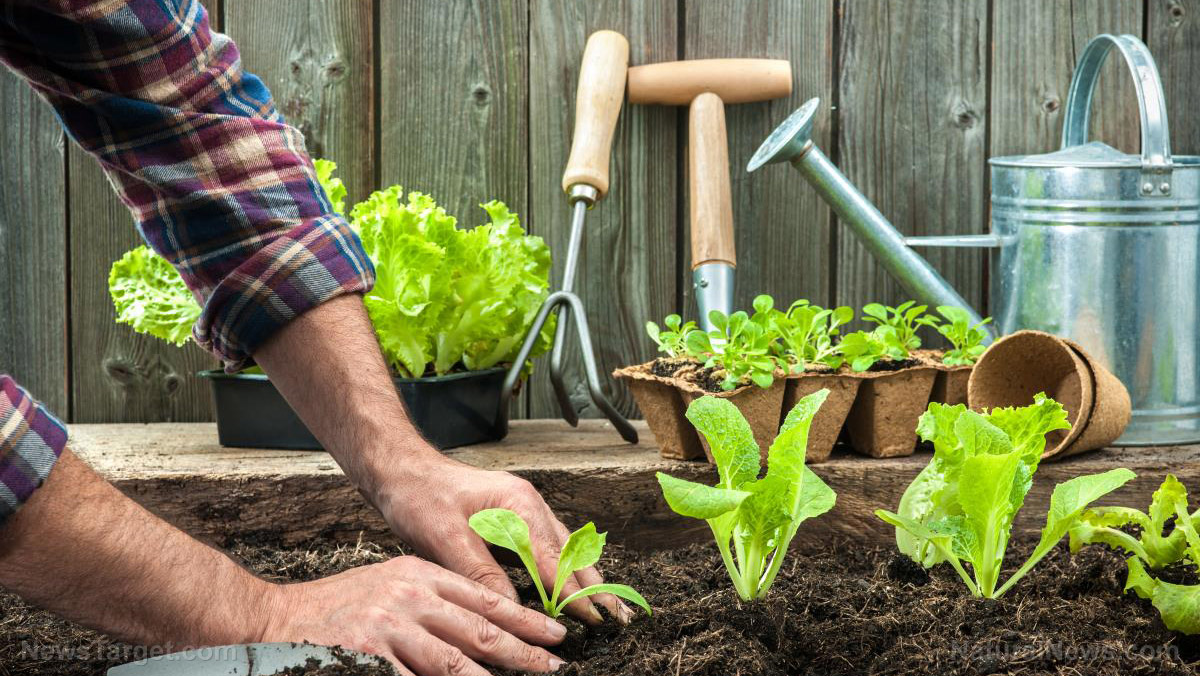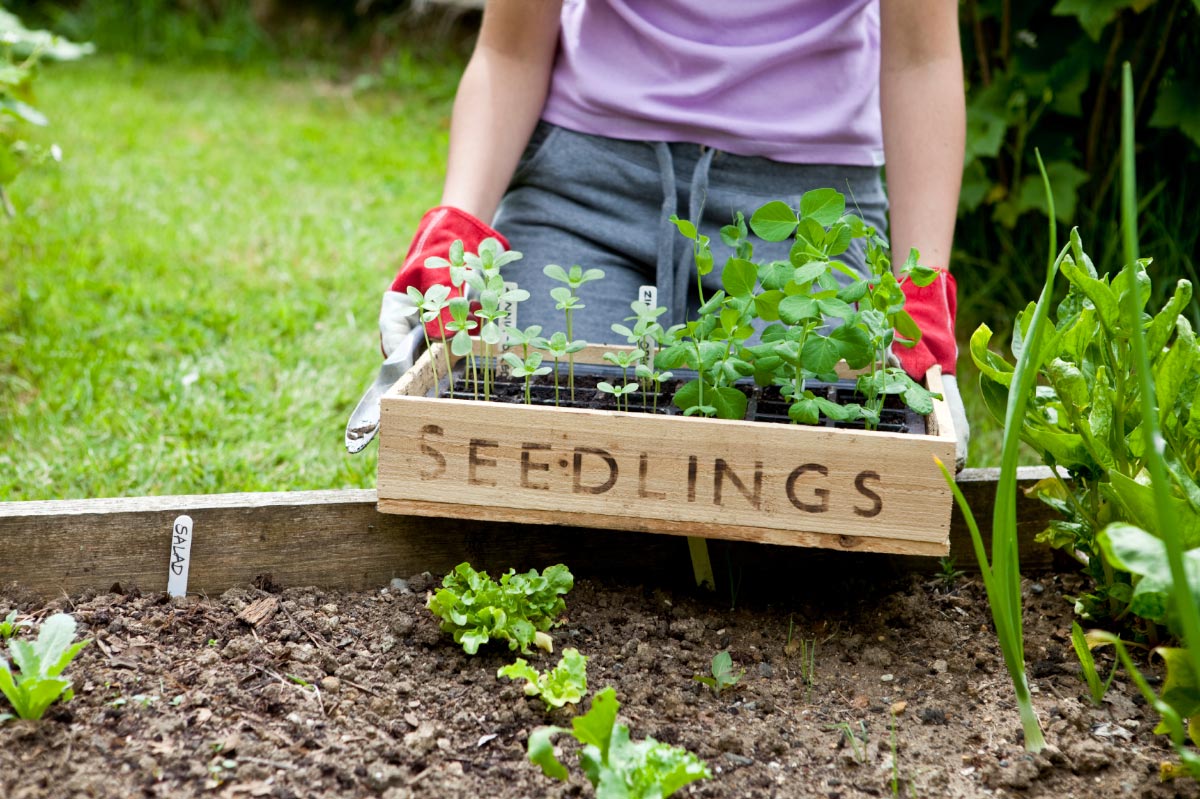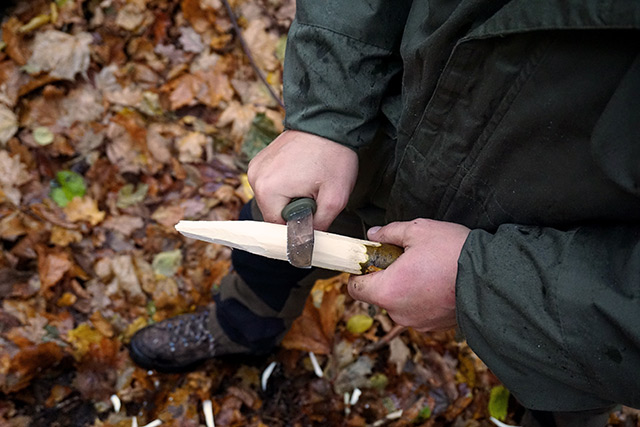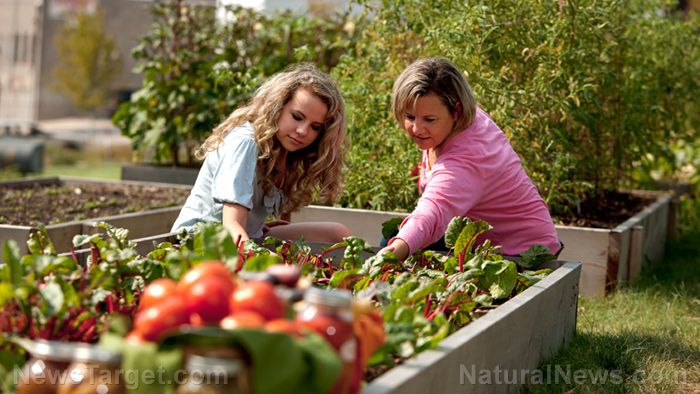Food storage tips: How to turn a trash can into a root cellar
03/03/2023 / By Zoey Sky

Root cellars are ideal if you need an effective method for long-term food storage and preservation. It will help keep food fresh and protect your stockpile from spoilage, pests and other common threats.
If you have the budget, you can build a large root cellar on your property to maximize storage space.
But if space or money is an issue, you can build a simple root cellar with a new trash can and some dirt. (h/t to AskAPrepper.com)
How to make a trash can root cellar
Follow the steps below if you want to make a root cellar using a trash can. (Related: Prepping skills: 15 Food storage and preservation methods to learn before SHTF.)
You will need:
- A trash can or steel drum. Use a brand-new and clean galvanized or stainless steel garbage can or steel drum.
- A power drill
- Plastic sheeting. This will help extend the lifespan of the can or drum. Sturdy plastic sheeting can also help keep out pests.
- Rocks or cinder blocks. These materials are optional, but using them will help create a raised shoulder and ensure that runoff water after it rains doesn’t enter the can or drum.
- Corrugated sheet or covering. This will help protect the soil over the can. You can cover a corrugated sheet with old pieces of shade net.
- Equipment like a shovel for digging the hole and a wheelbarrow to move the rocks or cinder blocks. If the area has stubborn tree roots, you will need an ax.
Steps:
Choose the site for your root cellar
Try to locate a spot that never gets direct sun. If you decide on an area with soft ground, it will be easier to dig the hole quickly.
Avoid a low-lying area because heavy rain could cause a temporary dam or large puddle that will submerge your drum and ruin the food inside.
Turn the can upside down and use the power drill to carefully make several ventilation holes in the bottom of the trash can.
Place the trash can or steel drum
Mark the outermost circumference of the drum and clean any weeds in the area for approximately one foot in width. Start digging the hole.
Make sure the trash can’s top six to 12 inches is above the soil line. You will create a shoulder so the trash can be entirely isolated, but raising the lid will ensure that the trash can does not become submerged.
Measure the depth you need to gain on the shovel’s handle. This can help you keep track as you continued to set up the trash can root cellar.
Cover the trash can in plastic sheeting then place it put in the hole
You can use an old paint drop sheet as a protective “tube” for the can or drum. Place the covered trash can inside the hole.
Cover the entire top of the drum so none of the dirt ends up inside the drum.
Cover the trash can to protect against water damage
Once the trash can is secured, cover it with corrugated sheeting and old shade netting to keep the water away and hide it from looters.
Shade net is a lightweight knitted polyethylene fabric that helps protect plants from the sun. Its material is rot- and mildew-resistant and it doesn’t become brittle.
Shade net is water permeable and it offers superior ventilation, making it a great addition to your trash can root cellar.
You also need to make sure that the trash can root cellar is hidden well so others won’t be able to find it when supplies become scarce.
Benefits of having a root cellar
Root cellars are a great way to store and preserve food on your homestead. The underground room will provide a dark environment that helps maintain the freshness and nutritional value of the food in your stockpile.
Once you learn how to control the temperature and humidity in a root cellar, you can slow down or stop food perishability altogether. This makes even a small trash can root cellar one of the best ways to stockpile food for long-term storage and emergency preparedness.
The darkness in the root cellar will also help protect the food from sunlight, which can accelerate the breakdown of food nutrients.
Typical items stored in a root cellar include:
- Canned goods
- Dried meats
- Fruits
- Grains
- Nuts
- Vegetables
You can also use a root cellar to store other food items like butter, cheese, eggs, beer and wine. Plan ahead and rotate your supply regularly to keep food and items in the root cellar fresh.
If you have a backup power source on your homestead, you can also store food in a fridge.
Preventing moisture in a trash can root cellar
If you store fresh produce that has not been dried, moisture inside the trash can or steel drum may cause issues.
Generally, a root cellar needs proper ventilation to maintain a proper temperature and humidity level.
Good air circulation helps prevent mold, mildew and other organisms that cause spoilage from developing on stored food. Without proper ventilation, the air in a root cellar can become stale, which creates a hospitable environment for these organisms.
Proper ventilation can help prevent root vegetables like potatoes and onions from sprouting in the root cellar. If you build a root cellar in an extra room on your property, you can achieve proper ventilation by using a fan to move air in and out.
For a garbage can root cellar, you can install a small vent or drill holes at the top of the root cellar or at the bottom of the garbage can.
Keeping the air dry without ventilation
If you cannot provide any ventilation for the trash can root cellar, take additional steps to dry the air inside it. Do this by adding completely dry wood shavings or newspaper inside a root cellar to wick up moisture and dry the air.
Alternatively, you can use straw or hay. Wood shavings can absorb moisture, making it easier to maintain the desired humidity levels.
Use newspapers to line surfaces or shelves inside the root cellar. The newspaper will help absorb water.
Both materials are inexpensive, so they are ideal for building a root cellar on a budget.
More tips for storing food in a root cellar
Once you install the trash can root cellar, keep these tips in mind to extend the shelf life of food that you will store in it:
Shake off loose dirt from vegetables instead of washing it off. Many root-cellar vegetables store better this way, but leaving them wet can encourage rot.
Carrots and beets are easy to store. Brush off any loose dirt, clip foliage back to about an inch above the root and store the vegetables in boxes of moist sand or peat moss.
Handle vegetables carefully. Even slightly rough treatment can cause invisible bruising, which makes the produce start decomposing.
Stock a root cellar as late in the season as possible. If possible, chill the produce in the fridge before putting it in the trash can root cellar.
Several vegetables like onions, potatoes, pumpkins and winter squash must be “cured” for several days in warm temperatures before going into storage.
Most fruit “breathes,” but others like apples and pears must be wrapped in paper to slow the release of ethylene gas. This gas can cause spoilage in other produce in the root cellar.
Check your vegetables regularly. Remove vegetables with any signs of rot to ensure that the rest of the produce in the root cellar isn’t also going bad.
Check out Foodstorage.news for more tips on how to hide and store food before SHTF.
Watch the video below to learn how to water glass eggs for long-term storage.
This video is from the snobbish prepper channel on Brighteon.com.
More related stories:
Food storage tips: How to store vegetables if you don’t have a root cellar.
Upcycling for preppers: How to turn a broken freezer into a mini root cellar.
Food storage tips: How to prep for life without a fridge.
Sources include:
Submit a correction >>
Tagged Under:
DIY, emergency food, food freedom, Food storage, food supply, homesteading, how-to, preparedness, prepper, prepping, prepping projects, root cellar, self sufficiency, survival, sustainable living, trash can
This article may contain statements that reflect the opinion of the author
RECENT NEWS & ARTICLES
COPYRIGHT © 2017 PREPAREDNESS NEWS


















